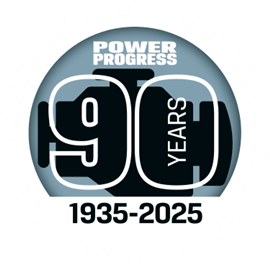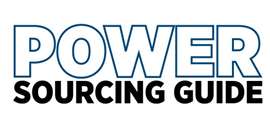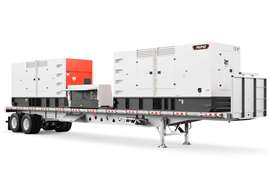Read this article in Français Deutsch Italiano Português Español
Cummins’ HELM engines support alternative fuels
21 August 2025
Julian Buckley finds out how the HELM engines from Cummins have been built from the ground up to support alternative fuels
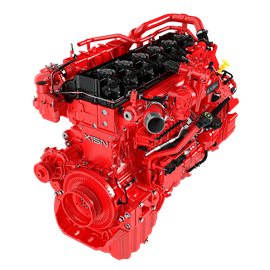 Cummins X15N for the North America market (Photo: Cummins)
Cummins X15N for the North America market (Photo: Cummins)
Engine manufacturers are continuing to explore the potential of different alternative fuels with the intent of delivering improved fuel economy, reduced emissions and a lower total cost of ownership for customers.
Despite the potential, hydrogen has lost some of its early promise as a direct replacement for diesel. Simply put, hydrogen is still expensive, as is development of the technology to use the fuel. Limited availability presents a further issue.
Because of these factors, some companies have switched over to focus on natural gas (methane), either as CNG or LNG, or as biomethane (sometimes referred to as biogas, renewable natural gas or RNG). As with hydrogen, engines using biomethane can achieve nearly 100% CO2 emission reductions measured from well to wheel.
Asked about the state of the alternative fuels market, William Lamb, director of Platform Strategy for Cummins’ Engine Business, says that there is definitely renewed interest in natural gas as a fuel. “At least from a European and UK perspective, there has been growing interest in natural gas; it has also been strong in China in recent years. Globally, we’re seeing different trends in different regions, dependent on where those areas get their primary energy and on local emission regulations.”
 William Lamb, Cummins
William Lamb, Cummins
“We’ve invested in new platforms to support improved fuel economy, power density and reduced parasitic power loss.”
While natural gas has gained some attention, he says there has been even more interest in biogas. Lamb believes that this is down to a series of factors, including the potential for reduced operating costs when using gaseous fuels and also the need to reduce greenhouse gas emissions to meet regulatory standards.
Launch program
To streamline its range of engines and the variants within those model lines, Cummins has introduced its HELM platforms. Models across each platform are based on the block, with each variant fitted with cylinder heads and injection systems for a specific fuel type. Usually launched as a diesel variant, HELM ranges go on to include natural gas and then hydrogen variants, with the latter still under development.
Asked if the driving force behind the move to launch the HELM engines was to help customers cut engine emissions or to provide an option using every fuel choice, Lamb says there’s a two-fold answer.
“Diesel is going to be around for a number of years in most markets, longer in some other regions. We’ve invested in new platforms to support improved fuel economy, power density and reduced parasitic power loss. We couldn’t do that on older platforms, so that was a motivating factor for the HELM products.
The other benefit is that we’ve been able to design the engines so they can be adapted to use both compression ignition fuels and spark ignition fuels without any compromise. With some modifications you could run a regular diesel engine on natural gas, but it’s a compromise in terms of power and efficiency.”
As with most engine OEMs, the natural gas technology developed by Cummins uses spark ignition. Lamb says that compression ignition is a tech which offers some positives when using gaseous fuel, but drawbacks such as the need for complex emissions aftertreatment systems.
Engine choice
According to Lamb, Cummins is continuing to receive a lot of interest in its HELM engines owing to a series of benefits.
“Customers come at this from different angles, but no matter the fuel type, they understand that that it’s possible to install a diesel engine or a natural gas engine in the same space and with the same interfaces. If you install a HELM diesel engine for one market and a natural gas engine for anther, it’s possible to support two variants with very little modification to the machine.
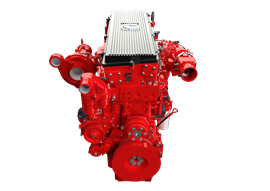 Cummins X10 Euro 7 ready engine (Photo: Cummins)
Cummins X10 Euro 7 ready engine (Photo: Cummins)
“Because they use the same platform, either choice means the engines are already packaged to fit their vehicle or machine; everything’s integrated and interfaces as it should with the transmission and other sub-systems. Fundamentally, there’s no compromise. Whether you select the diesel or natural model, you’re getting the best engine available – and even preparing for hydrogen when it comes along.”
Lamb notes that the direct benefit of the HELM system lies with the OEM, due to the flexibility of the engine and the capability to futureproof their machines. For the end customer it’s about getting access to the latest engine technology, which helps to improve total cost of ownership.
It’s possible that, without the HELM series, some OEMs wouldn’t offer an alternative fuel solution, says Lamb. If the engines were based on different platforms and required separate development programmes to accommodate them in the given application, it’s quite possible the vehicle or machine OEM would only offer a diesel variant.
Design differentiation
Lamb says that the cylinder head is the primary differentiator between the engines designed for different fuels. For the diesel version, which uses compression ignition, the cylinder head has a flat surface. The valves are vertical in relation to the combustion chamber, but are designed to propagate a high swirl to combine the air and fuel.
“The setup concentrates the diesel fuel towards the centre of the cylinder head, which supports a better combustion event under compression ignition,” says Lamb.
The version using spark ignition and natural gas – Lamb notes that this is typical of both natural gas and petrol engines regardless of application – uses a ‘pent roof’ design with a single-point injection system. This develops high levels of tumble, where the air and fuel mix move in an end-over-end pattern rather than a swirl.
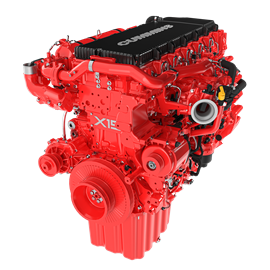 Cummins EPA27 X15 diesel engine (Photo: Cummins)
Cummins EPA27 X15 diesel engine (Photo: Cummins)
“Those are the two fundamental differences between the engines, which are a lot easier to describe than develop due to the architectural constraints of the designs,” he adds.
While the galleries which move engine oil around the block are the same regardless of fuel type, the same cannot be said of the head unit. These have specific requirements due to the intake and outlet valves and camshafts used with each fuel type and engine design.
While it might have been seen as marketing to say that the engine block remains the same no matter the fuel type, Lamb points out that at casting there is no difference between the two – these components truly are agnostic. Different pistons and conrods could be used, but this is more related to the application type (on- or off-highway, for example) rather than the fuel.
Material changes
There are a few instances where materials have been changed to support the use of natural gas, says Lamb. In one case, the valve seats have been hardened to prevent premature wear, largely due to the gaseous fuel not having any of the lubricant qualities of diesel fuel.
Additionally, due to the higher temperatures, the turbo uses different materials to maintain integrity. “The units used on the natural gas engines have a different turbine housing made from high-temperature cast iron or ni-resist iron alloys,” says Lamb.
Continuing, he says that the turbine wheel, which has to withstand higher thermal loads, is made from inconel, a nickel-based superalloy. Being exposed to lower temperatures, the compressor housing is made from cast aluminium alloy, which delivers improve thermal conductivity.
Turning to look at emissions aftertreatment, diesel variants will use an SCR/DPF system. On the other hand, natural gas variants have what Lamb says is a somewhat simpler design. “These use a three-way catalyst to address NOx, hydrocarbons and carbon monoxide. It’s more of a passive system, it doesn’t regenerate or require urea additive.”
He says that NOx emissions are under scrutiny in the US and with this system the natural gas engines meet regulations. “Spark ignition engines operate at a lower pressure than diesel models, so they don’t generate high NOx levels,” he explains. This, despite running at a higher overall temperature.
POWER SOURCING GUIDE
The trusted reference and buyer’s guide for 83 years
The original “desktop search engine,” guiding nearly 10,000 users in more than 90 countries it is the primary reference for specifications and details on all the components that go into engine systems.
Visit Now
STAY CONNECTED




Receive the information you need when you need it through our world-leading magazines, newsletters and daily briefings.
CONNECT WITH THE TEAM







